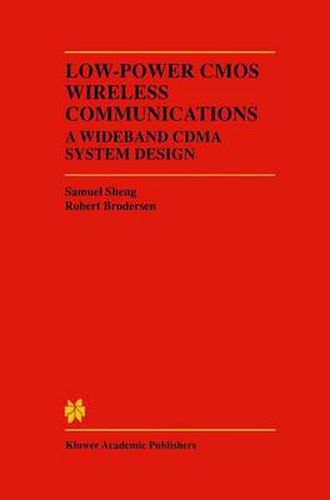Readings Newsletter
Become a Readings Member to make your shopping experience even easier.
Sign in or sign up for free!
You’re not far away from qualifying for FREE standard shipping within Australia
You’ve qualified for FREE standard shipping within Australia
The cart is loading…






This title is printed to order. This book may have been self-published. If so, we cannot guarantee the quality of the content. In the main most books will have gone through the editing process however some may not. We therefore suggest that you be aware of this before ordering this book. If in doubt check either the author or publisher’s details as we are unable to accept any returns unless they are faulty. Please contact us if you have any questions.
This is a study of the issues behind the development of a high-bandwidth, silicon-complementary, metal-oxide silicon (CMOS), low-power transceiver system for mobile RF wireless data communications. In the design of any RF communications system, three distinct factors must be considered: the propagation environment in question, the multiplexing and modulation of user data streams, and the complexity of hardware required to implement the desired link. None of these can be allowed to dominate. Coupling between system design and implementation, the key to the simultaneous achievement of high band-width and low power, is emphasized throughout the book. The material presented is the result of broad-band wireless-systems research carried out at the University of California, Berkeley. The wireless development was motivated by a much larger collaborative effort known as the Infopad Project, which was centred on the development of a mobile information terminal for multimedia content - a wireless network computer . The desire for mobility, combined with the need to support potentially hundreds of users simultaneously accessing full-motion digital video, demanded a wireless solution that was of far lower power and higher data-rate than could be provided by existing systems. That solution is the topic of this book - a case study of not only wireless-systems designs, but also the implementation of such a link, down to the analogue and digital circuit level.
$9.00 standard shipping within Australia
FREE standard shipping within Australia for orders over $100.00
Express & International shipping calculated at checkout
This title is printed to order. This book may have been self-published. If so, we cannot guarantee the quality of the content. In the main most books will have gone through the editing process however some may not. We therefore suggest that you be aware of this before ordering this book. If in doubt check either the author or publisher’s details as we are unable to accept any returns unless they are faulty. Please contact us if you have any questions.
This is a study of the issues behind the development of a high-bandwidth, silicon-complementary, metal-oxide silicon (CMOS), low-power transceiver system for mobile RF wireless data communications. In the design of any RF communications system, three distinct factors must be considered: the propagation environment in question, the multiplexing and modulation of user data streams, and the complexity of hardware required to implement the desired link. None of these can be allowed to dominate. Coupling between system design and implementation, the key to the simultaneous achievement of high band-width and low power, is emphasized throughout the book. The material presented is the result of broad-band wireless-systems research carried out at the University of California, Berkeley. The wireless development was motivated by a much larger collaborative effort known as the Infopad Project, which was centred on the development of a mobile information terminal for multimedia content - a wireless network computer . The desire for mobility, combined with the need to support potentially hundreds of users simultaneously accessing full-motion digital video, demanded a wireless solution that was of far lower power and higher data-rate than could be provided by existing systems. That solution is the topic of this book - a case study of not only wireless-systems designs, but also the implementation of such a link, down to the analogue and digital circuit level.